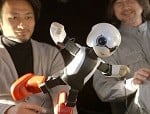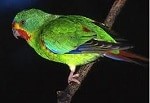Graphene light bulbs will hit the shops later this year
09:42, March 29, 2015
Russian and American start marathon 342-day stay in space
07:47, March 28, 2015
Kirobo the astronaut robot wins two Guinness World Record titles
08:32, March 27, 2015
Most British landmarks switching off lights during Earth Hour
04:38, March 28, 2015
Earth hour, when the world switches off its lights for one hour, March 28
05:17, March 27, 2015
Mysterious dark matter passes through galaxy collisions unscathed, baffling scientists
01:50, March 27, 2015
Swift Parrot faces extinction if not protected, say Australian researchers
11:51, March 26, 2015
Mars has life-sustaining nitrogen, Curiosity rover discovers
14:55, March 25, 2015
Our Universe will collapse soon, that is, soon in astronomical terms
01:11, March 25, 2015
Latest Articles
Join Our Email List
Sign up to receive the latest articles right in your inbox.
email address
*Replace this mock form with your preferred form plugin










